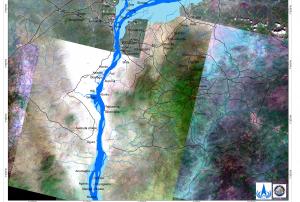The International Charter "Space and Major Disaster" was activated twice last week for floods in Africa: Chad and Nigeria.
UNITAR/UNOSAT on behalf of UNICEF activated the mechanism for Chad on 10 October 2012. Heavy rains which started in early August had caused continuing floods in Chad. Hundreds of thousands of people have been affected by the floods, with damage to both property and agriculture. In the Rig Rig District of the Kanem Region, 220 houses were destroyed and 3000 people were displaced. In the Sila Region, more than 13,000 houses were affected and the flood waters blocked major humanitarian supplies. In Guera, an estimated 850 people were in need of emergency support. And floods have also been reported in the capital, N'Djamena. In September the flood waters were still present, and had affected an estimated 466,000 people, and killed 34. 96,000 houses were reported destroyed and 255,000 hectares of crops lost.
In Nigeria, the Nigerian National…
more

